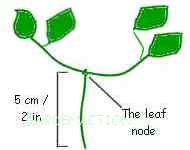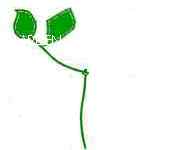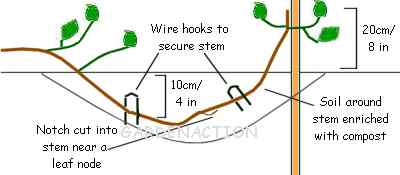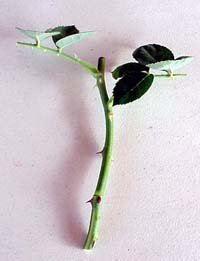Monthly check list : for texas zone 7a, USDA hardiness zone 8, Texas Region 3
source: dale groom, Calloway's Nursery, Texas A &M
January -
plant chilled tulips and hyacinths now with slow release fertilizer
spring bulbs planted in the fall should be up and growing now
Buy and plant fruit trees
Prune trees and ornamental grasses
Test and amend garden soils, adding organic matter as needed
Spray Dormant Oil on shrubs and trees to prevent scale
Water late in the day (and in advance of freezes)
Spring Garden:
Jan. 1 - spinach
Jan.15- carrots
February:plant amaryllis, paper white narcissus, gladiolus. Plant gladiolus every 2 weeks through april for continuous blooms in may and june.
plant beets, broccoli, cabbage, carrots, cauliflower, collards, corn, swiss chard, irish potatoes, kohlrabi, lettuce, mustard, radish, rutabagas, snap beans, shallots,turnips
start seeds in green house: tomatoes, peppers, eggplants
harvest onions and shallots, divide harvest in half and replant one half. The replanted ones will grow until june when it will be lifted and dried and the small bulbs will be stored for planting next fall.
when Cauliflower heads are about the size of a silver dollar, pull the leaves over the center of the plant and fasten them together with a clothes pin. (this causes them to come out creamy white by shading them from light)
harvest the lower leaves from leafy vegetables, harvest snow peas frequently
Plant Trees, shrubs, roses
Apply Preemergent Weed Preventers , Crabgrass Preventer to stop grassy weeds before germination
Portrait to stop broadleaf weeds
A&M spring garden schedule:
after Feb. 1 - asparagus, beets, broccoli, cabbage, carrots, cauliflower transplants, swiss chard, collards, kohlrabi, leaf lettuce, mustard, onion plants, parsley, english peas, radish, turnip,
before 2/15 - spinach
after 2/15-potatoes
after 2/25- sweet corn,
March:Plant spring annuals and perennials, trees, shrubs, roses
apply lawn food
prune oleander and crepe myrtles
late march: plant caladiums to get them started - indoors
plant summer flowering bulbs,
divide the summer flowering bulbs
fertilize shrubs
bag up fallen leaves for mulch to be used in the drought season
late march: cantalope, corn, cucumbers, eggplant (transplants), peppers (transplants), southern peas, pumpkin, summer squash, tomatoes (use transplants), watermelons
harvest root crops: radish when top of root is 1" in diameter, carrots - 1 ", turnip - 2", beet - 3", rutabaga - 3-4"
harvest broccoli when the largest flower buds in the head are the size of the head of a kitchen match
crop leafy vegetables regulary - harvest lower leaves first.
get a head start on weeds - mulch beds 3-4" and pull baby weeds
A&M Spring garden schedule:
sweet corn, mustard, radish
by 3/1 - beets, broccoli, cabbage, carrots, cauliflower tranplants, kohlrabi, onion plants, parsley,
english peas, potatoes,
after 3/5- beans, snap bush, snap pole, cucumber, summer squash, winter squash,
by 3/10 - turnip
by 3/15 - leaf lettuc,
after 3/15 - beans, lima bush, lima pole, egg plant, cantelope, pepper transplants, tomato transplants, watermelon
before 3/25- swiss chard, collards
after 3/25 - southern peas,
April -Azaleas and Irises in bloom
plant the bulbs started indoors into beds now (i.e. caladiums) -- plant caladiums mid to late april , one month after the last killing frost
plant trees, shrubs, roses
plant spring annuals and perennials
apply CORN MEAL for fungus
Feed trees and shrubs
prune shrubs
plant salvaged potted easter lillies in spot that gets morning sun and afternoon shade - they will rebloom next year
plant: cantalope, collards, corn, cucumber, cushaw, eggplant, honey dew, lima beans, luffa, malabar spinach, okra, peppers, pumpkin, snap peas, southern peas, squashes, sweet potatoes, swiss chard, tomato and watermelon
herbs to plant: basil, perilla, sesame, lemon balm, mint, rosemary
cage tomato plants, grow cucumbers on sturdy trellises at least 4' tall for increased production
A&M Spring planting guide:
beans, snap bush; sweet corn, cucumber, eggplant, cantelope; southern peas, pepper transplants
radish, summer squash, winter squash, watermelon
by april 1- mustard
by 4/10 - tomato transplants
after 4/10 - sweet potato slips
by april 15- beans, snap pole, beans, lima bush; beans, lima pole;
4/1- 4/20 - pumpkins
May - Oleanders in bloom
plant: collards, eggplant, okra, peppers, luffa (aka "climbing okra") , peanut, pumpkin, southern peas, sweet potatoes, squash (use slips), tomatoes (seed for transplants), cantalope, watermelon
Plant spring annuals and perennials
plant caladiums
plant trees, shrubs, roses
apply 2nd application of preemergents
Feed lawn
A&M spring garden guide:
by 5/1 - beans, snap bush, sweet corn, cucumber, eggplant, cantelope, pepper transplants, radish
summer and winter squash, watermelon
by 5/15- sweet potato slips
by 5/20 - southern peas
June -in bloom: roses, oleanders, gladiolus, lantana, purple jew, hydrangea, calla lilly, canna, esperanza, hibiscus
plant summer annuals, perennials
fertilize container gardens
control insects with bayer complete insect granules
treat for june bugs
apply granules to control fire ants
trim faded flowers on oleanders, crepe myrtles and roses to encourage more blooming
treat for white flies - 3 applications 10 days apart in the morning hours
plant cantalope, collards, eggplant, luffa, okra, peanuts, peppers, pumpkin, southern peas, sweet potato slips, swiss chard, watermelons
late june: plant transplants of tomatoes, bell peppers, and eggplant
June Gardening Guideline
by Keith C. Hansen, Extension Horticulturist, Smith Co. - Tyler, Texas
School's out, it's getting hotter and summer time activities are getting into full swing. June brings both the opportunity to plant summer color, and the routine garden maintenance of mowing and weeding. This spring's plentiful rainfall has hopefully helped our lawns, trees and gardens to begin to recover from last year's extreme stress. Take advantage of the longer days by doing gardening tasks in the morning or evening when it is more pleasant to be outside. To keep the lawn and garden looking great, here are a few tips for this June.
LAWNS
Hotter weather means grass will be growing faster. Keep up with the mowing so you don't have to bag the clippings. That may mean mowing every 5 or 6 days instead of every 7 to 10 days. Letting the clippings fall back into the lawn recycles nutrients but does not promote thatch. Keep the mower blade sharpened. Mowing frequently at the correct height will promote a healthy, thick turf that is resistant to weeds.
For St. Augustine or Bermuda lawns making poor growth thus far this year, make a second application of fertilizer. For best results, use a fertilizer with a high percentage of slow- release nitrogen so the grass won't grow quite so rapidly. Be careful to not apply too much fertilizer.
Warning! A wet, rainy June and lushly growing grass from high rates of nitrogen can lead to grey leaf spot, a fungal disease of St. Augustine grass. Symptoms include grey lesions outlined in black on the leaf blades. Severe infestations result in a "melting away" appearance, with the leaves collapsing, quickly decaying, exposing the soil underneath. Areas staying wet, in the shade, in low spots, frequently watered, infrequently mowed and recently fertilized are the most prone to grey leaf spot.
Centipede lawns fertilized earlier this year do not need to be fertilized at this time. Wait until fall for the next application.
As spring rains slack off and give way to drier days, apply supplemental water as needed. The rule of thumb is to water enough to wet the soil 5 to 6 inches deep. Do not water too frequently. Shallow, frequent watering promotes a shallow root system that is more susceptible to the stress of summer heat and winter cold.
LANDSCAPEPLANTS
The best way to conserve moisture in the landscape is by mulching. Pine bark, pine needles, cypress bark, composted grass clippings and shredded leaves are among the materials suitable for a mulch. A three to four inch layer over the root zone retains moisture, keeps the soil cooler and helps prevent weed seeds from germinating under your shrubs, trees and flowers.
As you check your shrubs, ground covers and flower beds, watch for seedling trees, such as oak, hickory and pecan. They are more easily pulled when young, and an old pair of pliers will help you get the grip needed close to the ground to pull up root and all. They are also more easily extracted when the soil is moist.
SUMMER COLOR
June is a great month for setting out colorful summer annuals. For large areas, try directly seeding zinnias, cosmos, gomphrena or portulaca. There are several others you can set out now as transplants including marigold, salvia, gaillardia, petunias, purslane, verbena, dusty miller, lantana, ageratum, amaranthus, gomphrena (globe amaranth or batchlor's buttons), celosia, Texas bluebells (or lisianthus), cockscomb, and firebush. Plant copper plants now in a sunny spot for a beautiful display this fall.
Color for shady areas include caladiums, coleus, impatiens and bedding begonias. Try nicotiana and coleus in partial shade, or for full sun the two Texas SuperStars (TM) SunColeus varieties 'Burgundy Sun' and 'Plum Parfait'.
Many nurseries now have a great supply of perennials to brighten the summer garden. Look for perennial hibiscus, canna, daylilies (select soon for the color you want), yarrow, summer phlox, salvia, perennial lantana, montbretia, Rudbeckia 'Goldstrum' and purple coneflower.
Plant mums now for fall bloom. Pinch back established mums, along with other fall bloomers like Mexican mint marigold, Mexican bush sage (Salvia leucantha) and autumn asters to encourage compactness and more flowers.
Water transplants before you plant and then again afterwards. The soil should be well- prepared with additions of organic matter, and well-drained. Apply a diluted solution of water-soluble fertilizer at planting and then regularly once plants begin to put on new growth. Remove faded blooms to encourage new growth and repeat bloom. A layer of mulch will conserve water and prevent weeds.
Summer tropical plants, though they are not freeze hardy, are perfectly at home in our East Texas heat and humidity. Plant them in the ground for quick growth or plant in pots or tubs so you can overwinter them indoors. Some of the best include tropical hibiscus, penta, oleander (semi-hardy), bougainvillea, mandevilla vine (spectacular!), agapanthus, trailing lantanas, allamanda vine and plumbago. These sun and heat lovers will quickly brighten up your yard and give a great display all summer and fall.
ROSES
Be sure to mulch your roses to conserve moisture and keep down summer weeds. Continue a routine spray program to control blackspot, and watch for insects and mites. Remove flowers as they fade and feed regularly to encourage new blooms.
AZALEAS
Apply a four to six inch layer of pine needles or other mulch to conserve water around these shallow-rooted shrubs. Feed them very lightly with a complete fertilizer to encourage production of new growth. Watch out for spider mites and lace bugs which feed on the underside of leaves. Their piercing and sucking causes the leaves to look stippled and bleached or bronzed.
PESTS AND PROBLEMS
One of the most common tomato disorders is blossom end rot. This is not a disease but a physiological problem caused by a lack of calcium and fluctuating soil moisture. Keep the soil evenly moist, mulch to conserve moisture and lime the soil before planting the next crop to provide calcium. Blossom end rot usually only affects the first tomatoes to ripen.
Spider mites can occur on tomatoes, roses, junipers, marigolds and other ornamentals now that the weather is hot and dry. Look for stippled leaves, and under severe infestations, fine webbing. Spider mites can be detected by taking suspicious leaves and rapping them over a white sheet of paper. Any dots which move are probably mites. Light infestations can be reduced by frequently syringing leaves with a sharp stream of water or using insecticidal soap. For more severe problems, use an approved miticide.
July -plant (sun)
lantana, pentas, blue daze, dusty miller, purslane, periwinkle, torenia, salvia
shade: coleus, wax leaf begonias
fertilize acid plants with chelated iron: azaleas, gardenias, blueberries, camelias
iron deficiency: young leaves are yellow green with dark green veins
do not prune camelias
plant annuals: bluebells, moss rose, periwinkles, sun coleus, zinnias
Perennials: hostas, hibiscus, daylilies, salvias, purple cone flowers
water early and deep
mulch 3-4"
feed trees and shrubs
Plant Egg plant, pepper, tomato for fall garden
plant transplants for fall garden: tomato, eggplant, peppers --- best time is July 25th
August - keep beds mulched 3-4 inches for drought
plant annuals : marigolds, mexican heather, petunias
perennials: ornamental grasses, mexican butterfly bush, groundcovers
plant shasta daisies transplants
water early and deep
mulch, mulch, mulch!
treat for fire ants
Fall Garden:
aug. 1 - southern peas, pumpkins
august 10- winter squash
aug. 20th - plant lima bean bush, sweet corn,
September:
Plant annuals: petunias, dianthus, ornamental peppers, snapdragons
perennials: Mums, asters
prune roses
feed lawn
apply preemergent weed preventers
Fall garden:
sept. 1- plant snap bean bush, broccoli, brussel sprouts, cabbage, cauliflower, cucumber, potatoes
sept. 10 - kohlrabi, summer squash
sept. 20 - plant transplants - broccoli, cauliflower, brussel sprouts, cabbage
annual transplants: allysum, aster, calendula, dianthus pinks, petunias, phlox, snap dragons, stock,
October:buy spring bulbs (to plant in december)
plant trees and shrubs
plant fall annuals: pansies, cyclamen
perennials: Mums
winterize lawn
reposition/thin out perennials if needed
fall garden:
garlic cloves
oct. 1 - swiss chard
oct. 10 - collards, leaf lettuce, parsley
oct. 15 - beets
annual transplants: alllysum, asters, calendula, dianthus pinks, flowering cabbage and kale, pansies, petunias, phlox, shasta daisies, snap dragons, stock, violas
November: Buy spring bulbs (to plant in december)
plant wildflower seeds
plant trees and shrubs
plant fall annuals and perennials
overseed lawn with perennial rye grass
prune trees
Fall Garden:
nov. 1 - mustard, onion seed, turnip
Nov. 10 - carrots
nov. 15-spinach
nov. 25 - radish
transplants: allysum, asters, calendula, dianthus pinks, flowering cabbage and kale, pansies
petunias, phlox, shasta daisies, snap dragons, stock, viola
December:plant spring bulbs with bone meal
plant fall annuals, perennials
transplants: allysum, asters, calendula, dianthus pinks, flowering cabbage and kale, pansies, phlox, stock, viola
plant or transplant trees and shrubs
prune trees
create container gardens to bring fresh color onto patio and into home
water late in day and in advance of freezes
TEXAS VARIETIES TO PLANT
(PER A&M)
Search for These Texas Varieties
Why is selecting the proper vegetable varieties so important? If you've been gardening for any length of time, you are well aware that there are many, many different varieties of garden vegetables. However, only three or four varieties of any one vegetable are well suited or adapted to your particular area of Texas.
Get the varieties that do well in your area of the state. Planting proven varieties is much better than picking varieties because of catchy names or availability. Listed below are the vegetable varieties recommended for use in Texas gardens. Your local county Extension agent may also have a listing of additional varieties worthy of use in your area.
Asparagus
UC 157, Jersey Giant, Jersey Gem
Beans
Snap - Topcrop, Tendercrop, Tendergreen, Kentucky Wonder, Greencrop
Pinto - UI-114, Dwarf Horticultural, Luna
Lima - Jackson Wonder, Florida Butter, Henderson Bush
Beets
Pacemaker, Detroit Dark Red
Broccoli
Packman, Baccus, Green Comet
Cabbage
Bravo, Rio Verde, Red Rookie
Carrots
Texas Gold Spike, Orlando Gold
Cauliflower
Snow Crown
Chinese Cabbage
Jade Pagoda, Monument, Napa, China Pride
Cucumbers
Slicers - Poinsett 76, Sweet Success, Dasher II, Sweet Slice
Pickling - Calypso, Carolina
Eggplant
Florida Market, Florida High Bush
Oriental Eggplant
Tycoon
Garlic
Texas White
Greens
Collards - Blue Max, Georgia Southern
Chard - Lucullus, Ruby
Kale
Vates, Blue Knight
Lettuce
Crisp Head - Mission
Loose Leaf - Prizehead, Red Sails, Black-Seeded Simpson
Butter Head - Buttercrunch
Melons
Cantaloupe - Mission, Primo, Caravelle
Honey Dew - TAM Dew, Honey Star
Mustard
Green Wave, Tendergreen, Southern Giant Curl
Okra
Clemson Spineless, Lee, Emerald
Onions
Bulb - Texas 1015 Y, Early Grano 502, Granex 33
Green - Evergreen Bunching, Crystal Wax
Pepper
Bell - Supersweet 860, Capistrano
Hot - TAM Mild Jalepeño, TAM Hidalgo Serrano
Sweet Jalepeño-shaped - Rio Grande Gold
Potatoes
Irish - Red: Red LaSoda, Norland;
White: Kennebec
Sweet - Beauregard, TAMU Corder, Centennial, Jewel
Pumpkin
Large - Connecticut Field, Big Max
Medium - Jack O'Lantern, Funny Face
Small - Jack-Be-Little
Radish
Cherry Belle, Sparkler, White Icicle
Southern Peas
Purple Hulls - TX Pink Eye
Cream - Cream 40, Champion
Black Eye - California #5
Crowder - Mississippi Silver, Zipper
Spinach
Savoy - Green Valley II, Ozarka II, Fall Green, Coho (semi-savoy)
Squash
Summer - Goldie, Gold Bar, Multipik
Zucchini - President, Senator
Butternut - Waltham, Early Butternut
Sweet Corn
Summer Sweet 7800, Sweet G-90, Kandy Korn, Silver Queen, Guadalupe Gold
Tomatoes
Bingo VF, Carnival VF, Heatwave VF, Celebrity VFNT, Merced VF, Surefire VF, SunMaster VF
Cherry Tomato
Small Fry, Cherry Grande
Turnips
White Lady, Royal Globe II
Watermelon
Standard - Jubilee, Royal Charleston, Royal Jubilee, Royal Sweet, Sangria, All Sweet
Seedless - Tri X-133, King of Hearts
 Cinnamon, which has the scientific name Cinnamomum zeylanicum, has originated from tropical Asia, especially Sri Lanka and India. Now the shrub is grown in almost every tropical region of the world. The herb, owing to its vast medicinal uses, had found a prominent position in traditional medicines, especially Ayurveda (the traditional Indian medicinal system). Traditionally cinnamon, due to its medicinal properties, has been used in many cultures for treating a variety of health disorders including diarrhea, arthritis, menstrual cramps, heavy menstruation, yeast infections, colds, flu, and digestive problems.
Cinnamon, which has the scientific name Cinnamomum zeylanicum, has originated from tropical Asia, especially Sri Lanka and India. Now the shrub is grown in almost every tropical region of the world. The herb, owing to its vast medicinal uses, had found a prominent position in traditional medicines, especially Ayurveda (the traditional Indian medicinal system). Traditionally cinnamon, due to its medicinal properties, has been used in many cultures for treating a variety of health disorders including diarrhea, arthritis, menstrual cramps, heavy menstruation, yeast infections, colds, flu, and digestive problems. Blood Purification: Cinnamon helps in removing blood impurities. Therefore it is often recommended for pimples.
Blood Purification: Cinnamon helps in removing blood impurities. Therefore it is often recommended for pimples.




















